The Role of IoT in Revolutionizing Agriculture
Introduction Agriculture is the backbone of most economies, playing a crucial role in ensuring food security and economic growth. With the growing global population and climate change challenges, traditional farming methods are becoming insufficient. Enter the Internet of Things (IoT) — a game-changing technology that integrates smart devices and sensors into agriculture. IoT has the potential to revolutionize the sector by making farming practices more efficient, sustainable, and profitable. In this blog, we delve into the various ways IoT is transforming agriculture, its benefits, and future prospects.
1. What is IoT in Agriculture?
The Internet of Things (IoT) refers to the network of physical devices equipped with sensors, software, and connectivity to collect and exchange data. In agriculture, IoT involves deploying devices such as soil sensors, weather stations, drones, and automated irrigation systems to monitor and manage farming operations in real time. These devices gather valuable insights, enabling farmers to make informed decisions and optimize resource usage.
2. Applications of IoT in Agriculture
a) Precision Farming Precision farming focuses on using IoT devices to optimize crop yield and resource efficiency. Sensors collect data on soil health, moisture levels, temperature, and nutrient content, which helps farmers apply fertilizers and water precisely where needed. This approach minimizes wastage and maximizes productivity.
b) Smart Irrigation Systems Traditional irrigation methods often lead to water wastage. IoT-based smart irrigation systems use soil moisture sensors and weather data to regulate water supply automatically. This ensures crops receive adequate water without over-irrigation, conserving water resources.
c) Livestock Monitoring IoT devices like wearable sensors for animals track vital signs, movement, and behavior. These devices help farmers monitor livestock health, detect diseases early, and improve overall animal welfare. GPS-enabled collars also assist in tracking the location of grazing animals.
d) Climate Monitoring Weather stations equipped with IoT sensors monitor temperature, humidity, rainfall, and wind speed in real time. This data allows farmers to predict weather patterns and plan their planting and harvesting schedules accordingly, reducing risks associated with unpredictable climatic conditions.
e) Automated Machinery IoT integrates with autonomous machinery, such as tractors and harvesters, to automate labor-intensive tasks. These machines use GPS and IoT sensors to perform tasks like plowing, planting, and harvesting with precision and minimal human intervention.
f) Pest and Disease Control IoT-enabled devices can detect early signs of pest infestations and plant diseases. By analyzing data from sensors and cameras, farmers can take timely action to protect crops, reducing dependency on chemical pesticides.
3. Benefits of IoT in Agriculture
a) Increased Efficiency IoT devices automate time-consuming tasks, reducing the need for manual labor. Farmers can manage large-scale operations with ease, saving time and effort.
b) Cost Savings By optimizing the use of resources like water, fertilizers, and pesticides, IoT reduces operational costs. Precision farming ensures that inputs are applied only where needed, minimizing wastage.
c) Better Yield With real-time insights into soil conditions, weather, and crop health, farmers can make informed decisions to enhance productivity. This leads to higher yields and better-quality produce.
d) Environmental Sustainability IoT promotes sustainable farming practices by minimizing resource wastage and reducing the use of harmful chemicals. Smart irrigation and precision agriculture help conserve water and protect the environment.
e) Early Problem Detection IoT devices enable early detection of issues such as pest infestations, diseases, or equipment malfunctions. Addressing these problems promptly prevents significant crop losses and ensures smooth operations.
f) Enhanced Traceability IoT technology facilitates better traceability in the food supply chain. Farmers can track the journey of their produce from farm to market, ensuring transparency and quality assurance for consumers.
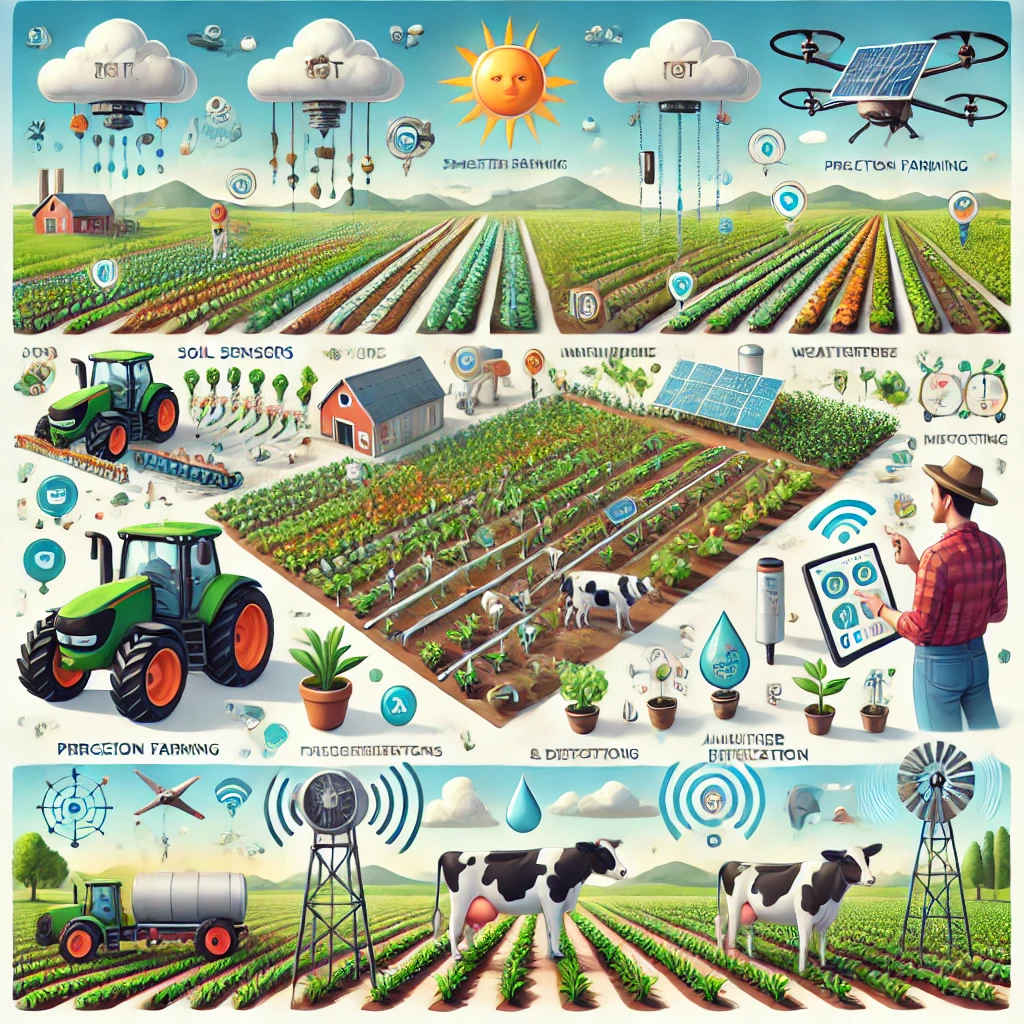
4. Challenges in Implementing IoT in Agriculture
a) High Initial Investment Deploying IoT devices and infrastructure requires significant upfront costs, which can be a barrier for small-scale farmers.
b) Connectivity Issues Many rural areas lack reliable internet connectivity, hindering the seamless functioning of IoT devices.
c) Data Management The vast amount of data generated by IoT devices can be overwhelming. Farmers need tools and skills to analyze and interpret this data effectively.
d) Maintenance and Technical Expertise IoT devices require regular maintenance and updates. Farmers may face challenges in handling technical issues or troubleshooting.
e) Privacy and Security Concerns IoT devices are vulnerable to cyber threats, raising concerns about data privacy and security. Ensuring secure networks is essential to protect sensitive farming data.
5. Future of IoT in Agriculture
The adoption of IoT in agriculture is expected to grow exponentially in the coming years. Advancements in technology, such as 5G connectivity and artificial intelligence (AI), will further enhance the capabilities of IoT devices. Governments and private organizations are also investing in smart farming initiatives, making IoT solutions more accessible to farmers.
Emerging trends include the integration of blockchain for transparent supply chains, AI-driven analytics for predictive farming, and robotics for automated operations. These innovations will continue to drive efficiency, sustainability, and profitability in agriculture.
Conclusion
IoT is transforming agriculture by enabling smarter, data-driven farming practices. From precision farming and smart irrigation to livestock monitoring and automated machinery, IoT offers solutions to some of the biggest challenges in modern agriculture. While there are hurdles to overcome, the benefits far outweigh the challenges. As technology continues to evolve, IoT holds the potential to revolutionize the way we produce food, ensuring a sustainable and food-secure future for generations to come.

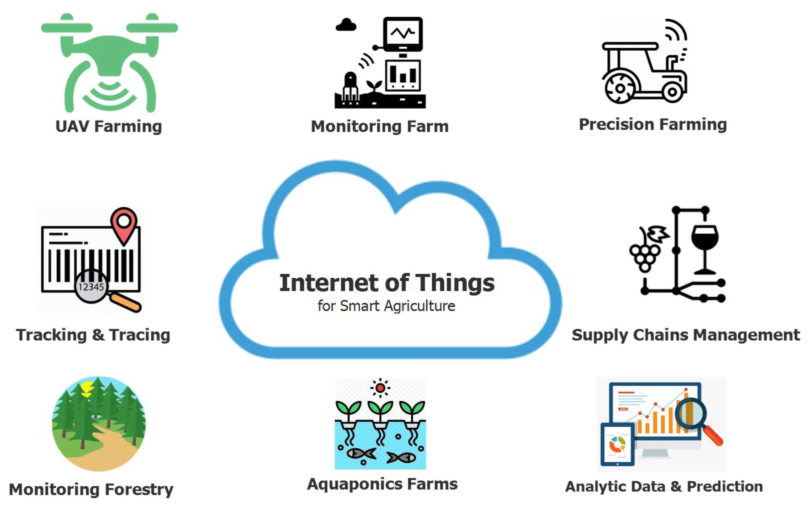
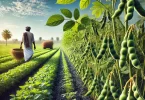
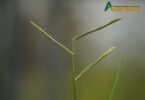
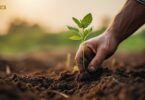
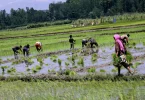
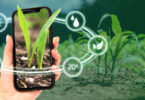
Leave a Comment